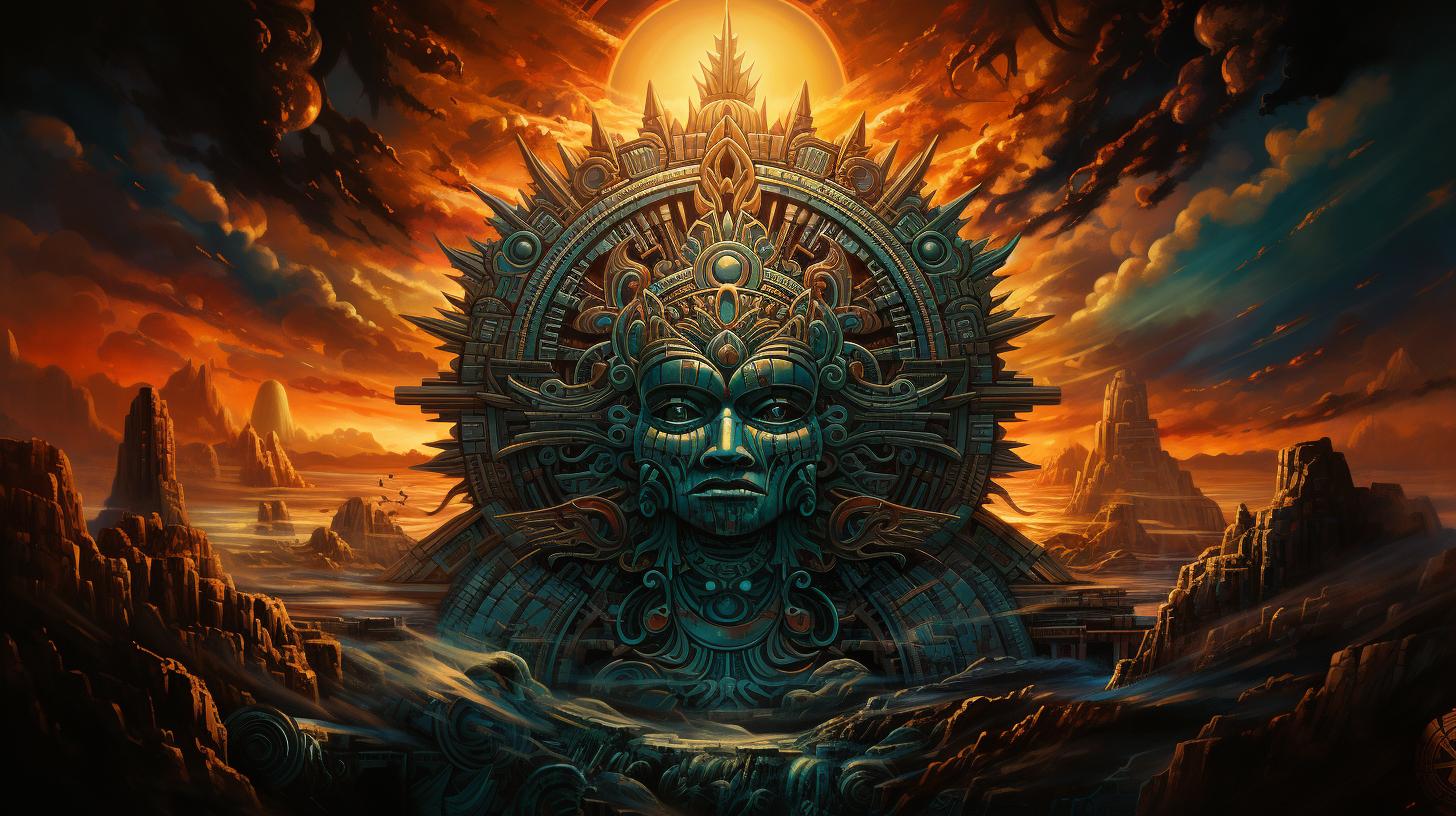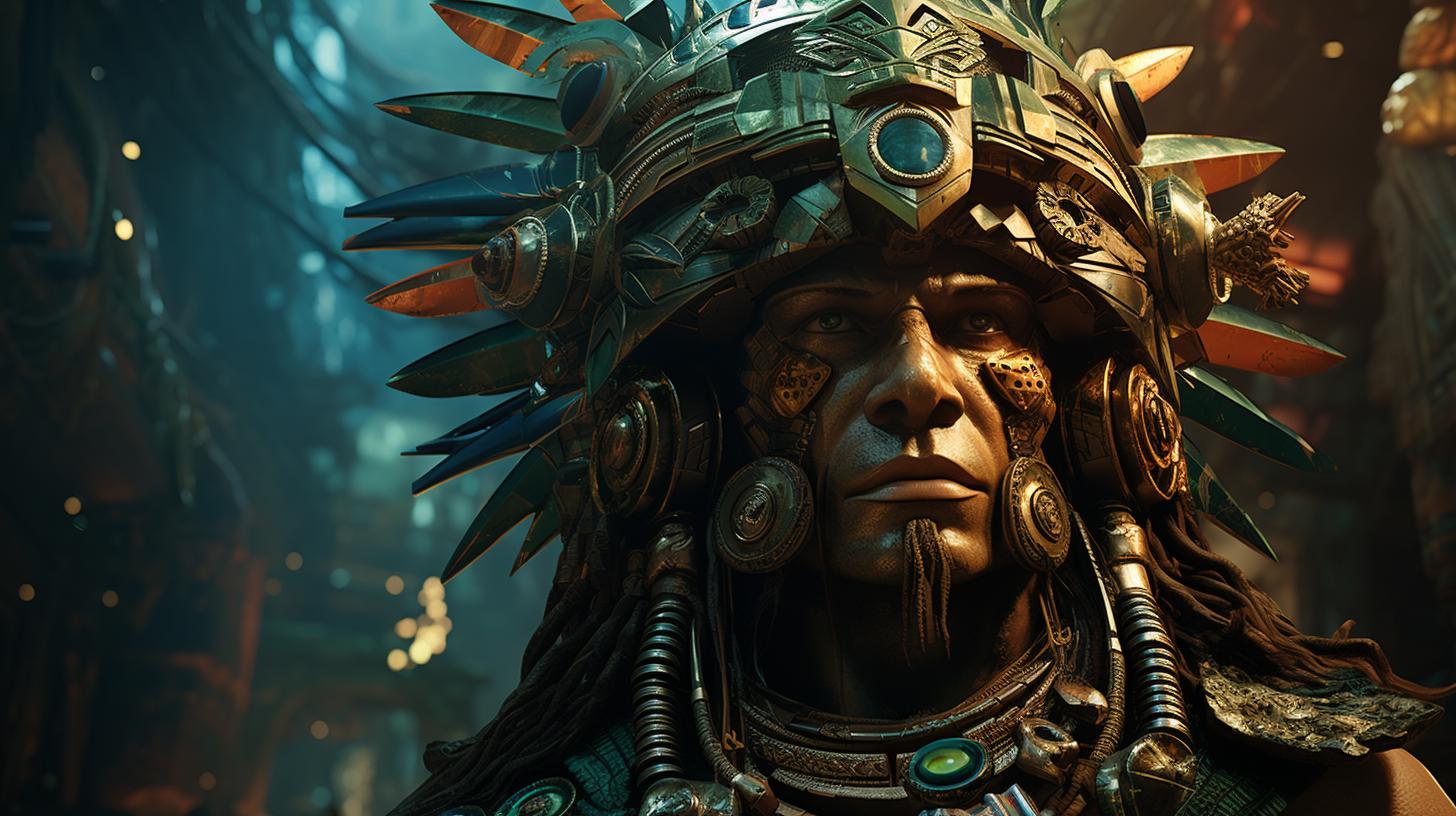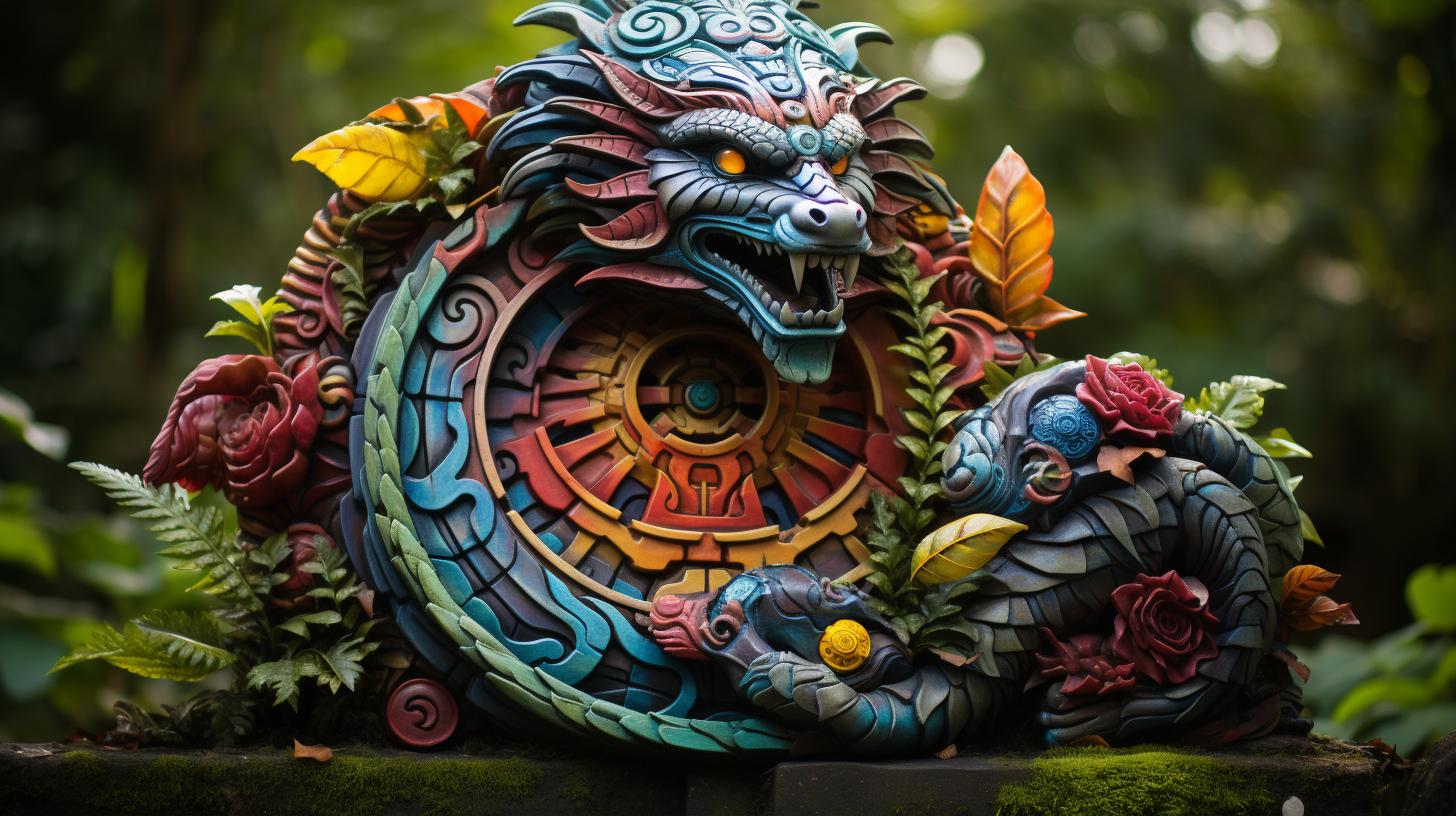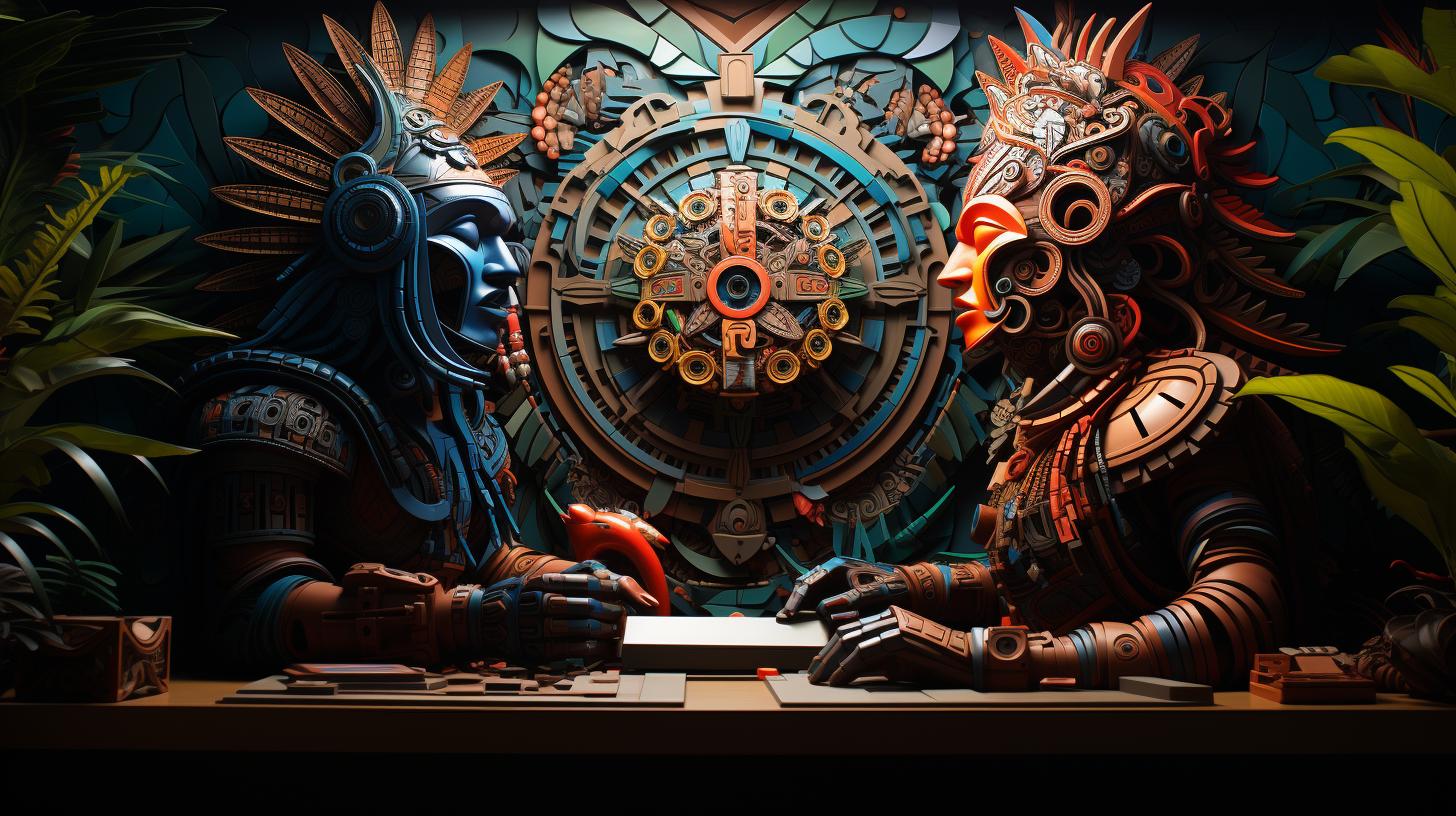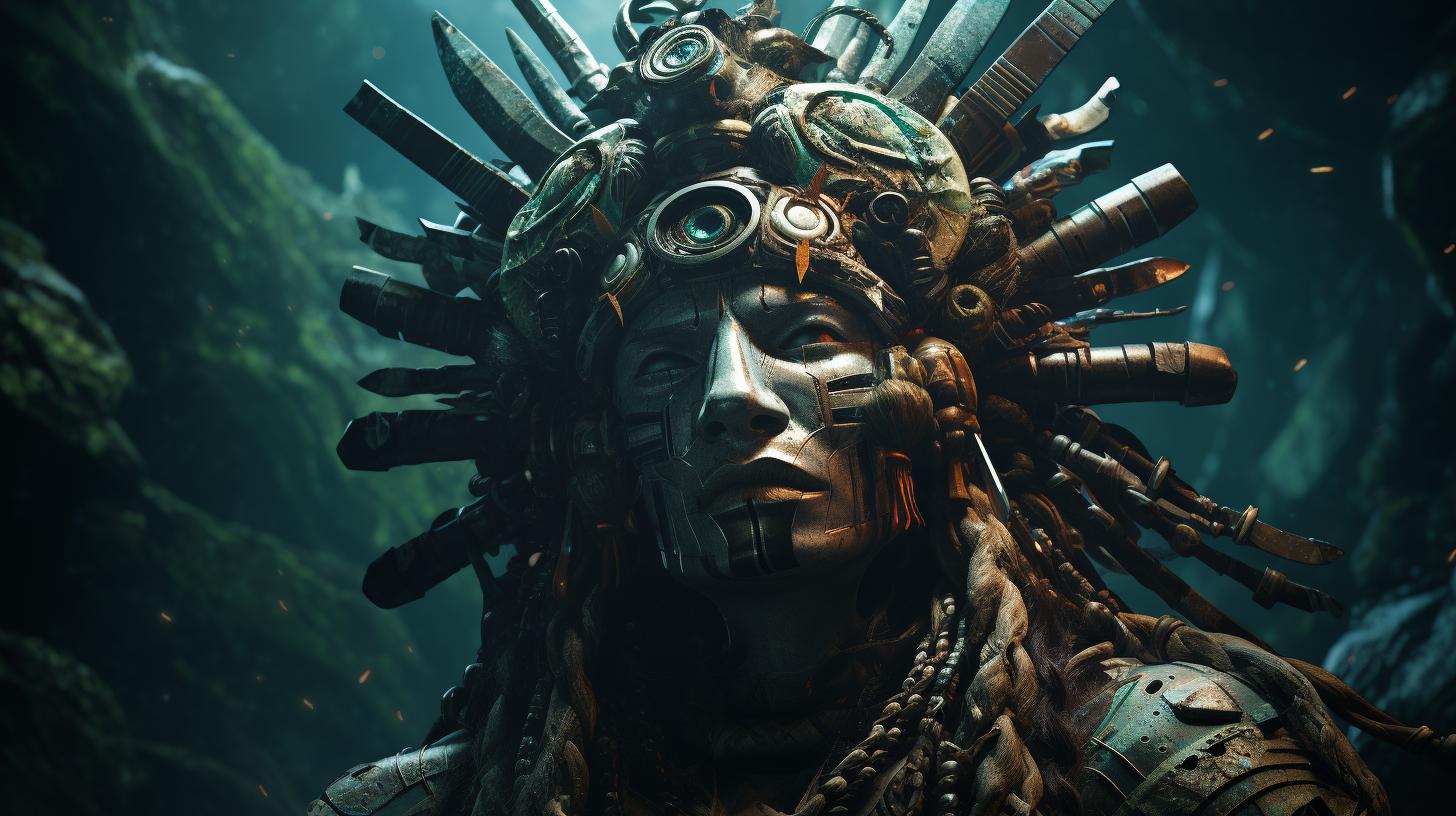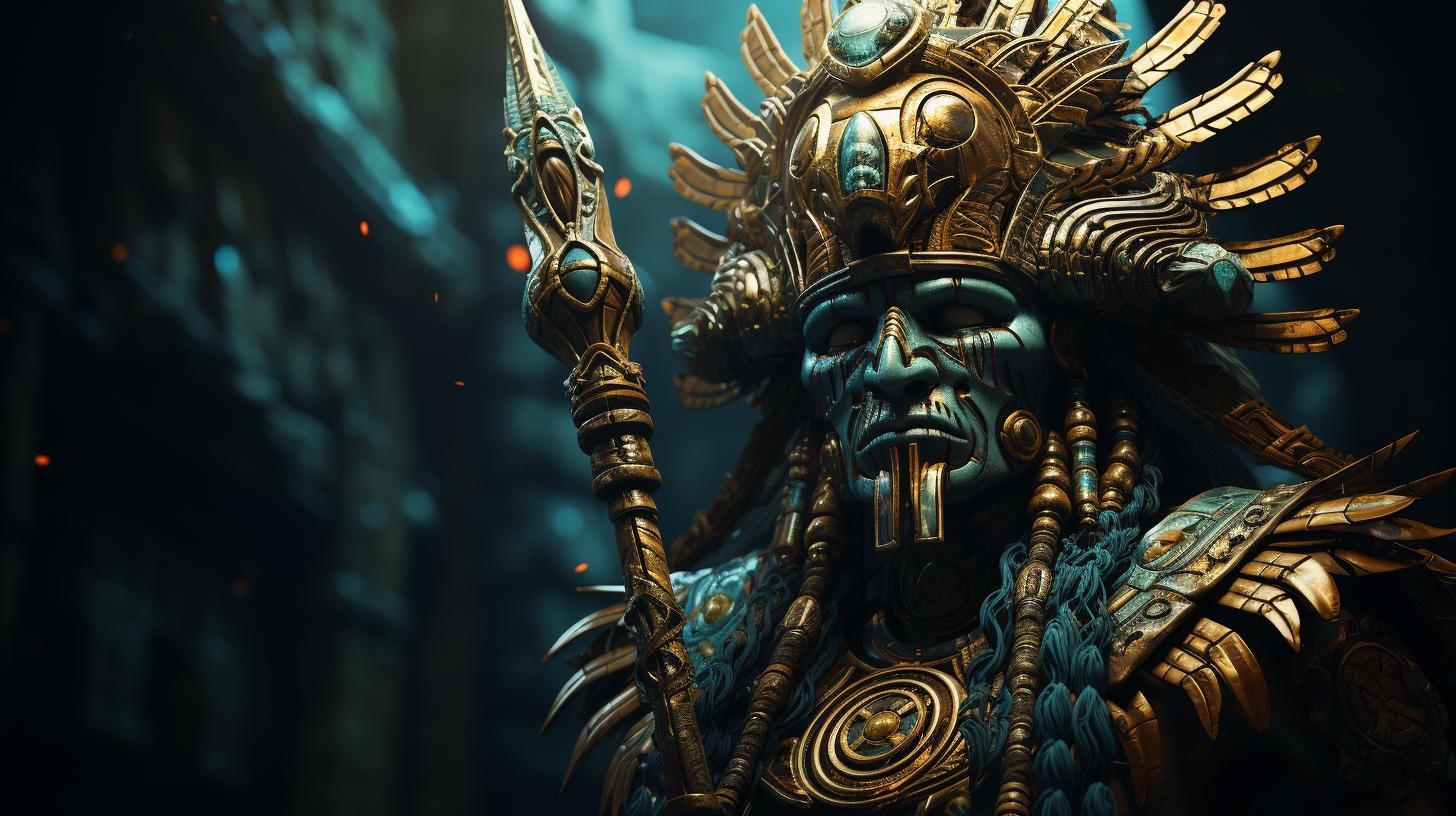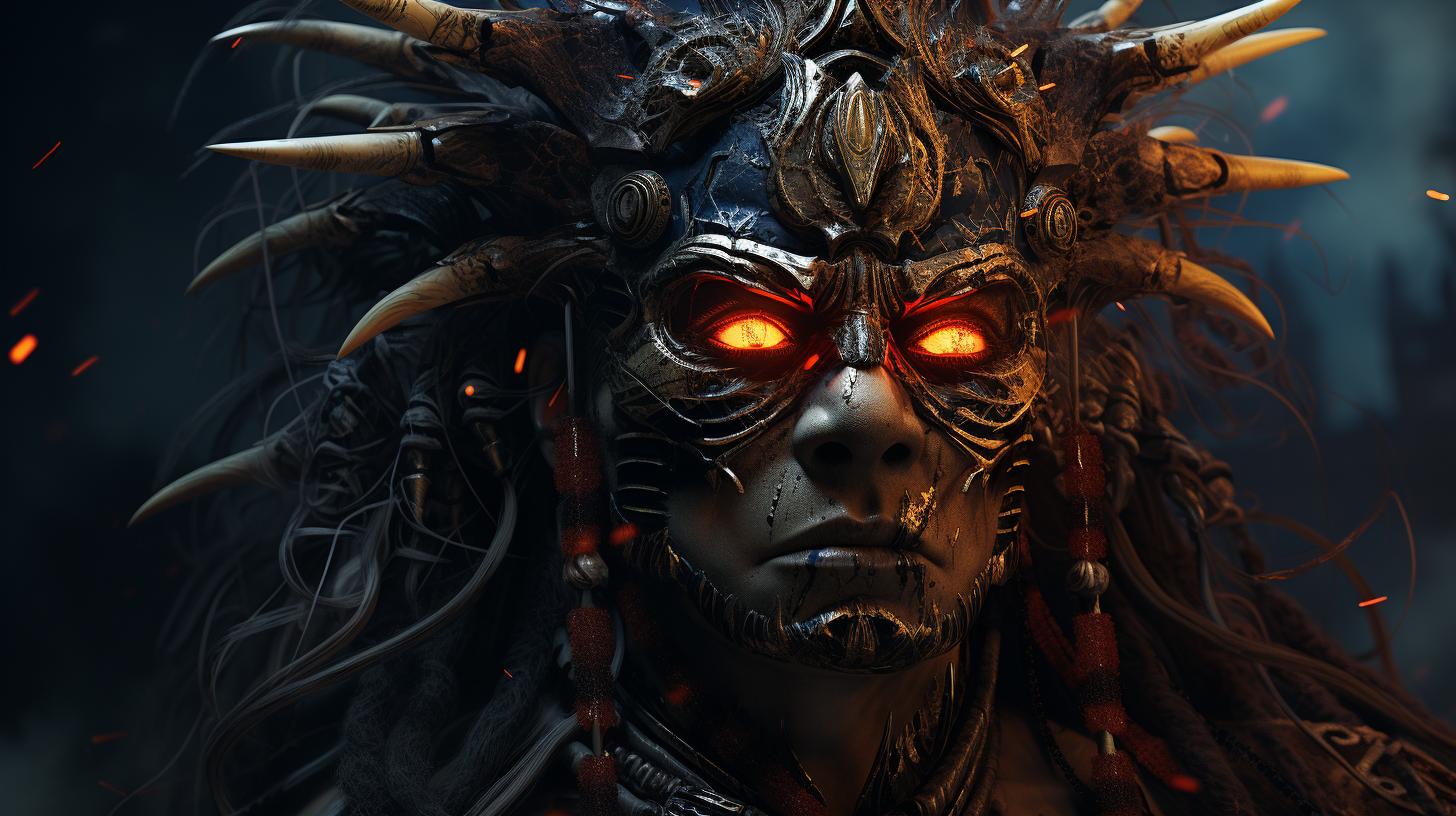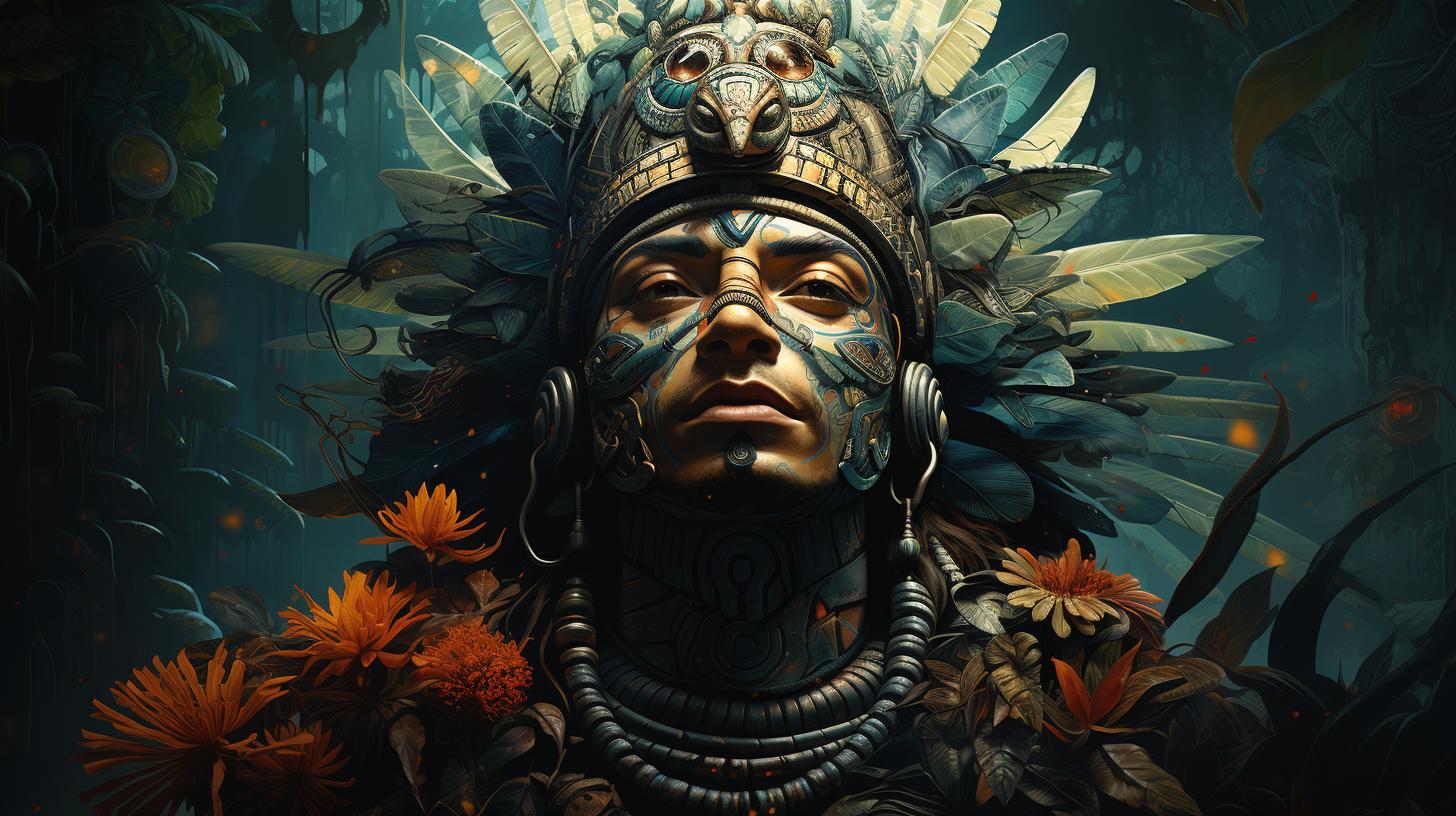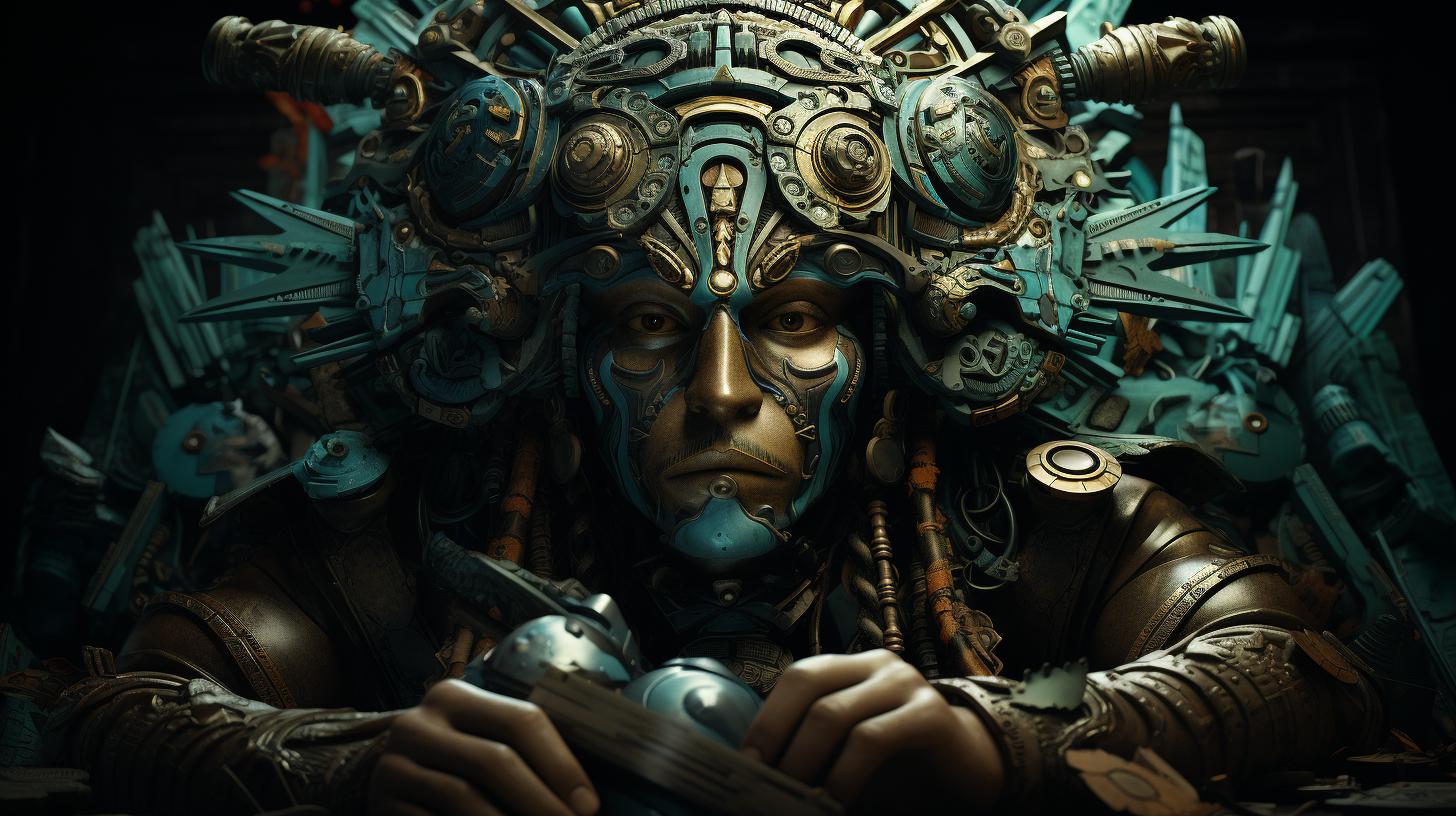Ah Xoc Kin Mayan God: Unveiling the Ancient Secrets of the Mayan Deity
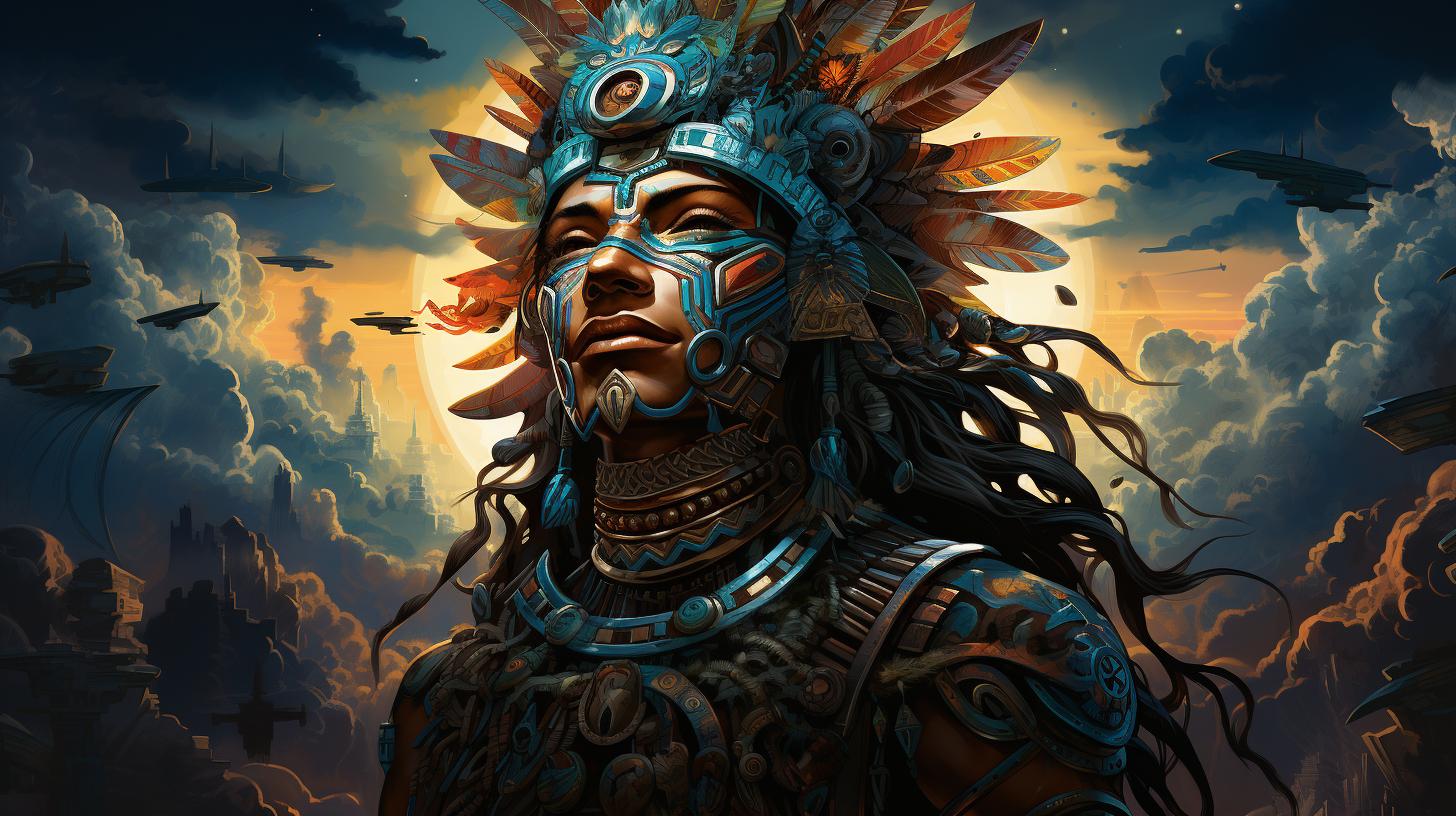
Ah Xoc Kin, the Mayan god of the sun and patron deity, holds a significant place in Maya mythology. This ancient deity is depicted in numerous artistic representations and holds symbolic importance for the Maya civilization.
Ah Xoc Kin plays a vital role in the creation story as well as in the journey through the underworld. Rituals and offerings dedicated to Ah Xoc Kin were an integral part of the Maya religious practices.
His influence on ancient Maya society and art showcases the significance of this deity in their daily lives. The legacy and preservation of Ah Xoc Kin worship continue in contemporary Maya culture.
The Origins of Ah Xoc Kin in Maya Mythology
The Mayan Pantheon: An Introduction
The Mayan civilization had a complex system of gods and deities, known as the Mayan Pantheon. These divine beings played integral roles in the Mayan religion and cosmology.
Among the pantheon, Ah Xoc Kin stood out as a prominent figure, revered as the god of the sun and the patron deity of the Mayan people.
Ah Xoc Kin: The Sun God and Patron Deity
Ah Xoc Kin held a significant position in the Mayan belief system, symbolizing the power of the sun and its vital role in sustaining life on Earth.
As the sun god, Ah Xoc Kin was associated with warmth, light, and fertility. The Mayans believed that his benevolence and blessings were essential for the prosperity and abundance of their crops, making him a crucial patron deity.
Depictions and Symbolism of Ah Xoc Kin
In various artistic representations, Ah Xoc Kin was depicted as a radiant figure, adorned with elaborate headdresses and holding symbols of the sun.
His depictions often showcased his association with fertility, featuring corn ears and agricultural motifs. The symbolism of Ah Xoc Kin encompassed not only the celestial aspects of the sun but also its close connection to agricultural abundance and the cycle of life.
Ah Xoc Kin in the Popol Vuh and Mayan Creation Myth
The Popol Vuh, a sacred Mayan text, offers valuable insights into the mythological narrative surrounding Ah Xoc Kin. In this creation story, Ah Xoc Kin plays a significant role, symbolizing the power of the sun and its life-giving energy.
Role of Ah Xoc Kin in the Creation Story
Within the Popol Vuh, Ah Xoc Kin is portrayed as one of the key deities involved in the creation of the world and humankind. He is responsible for bringing light and warmth to the Earth, ushering in a new era of existence.
As a vibrant and central figure, Ah Xoc Kin instills hope and represents the cycle of life.
Connection with the Maize God and the Hero Twins
The Maize God, an essential deity in Mayan mythology, shares a deep connection with Ah Xoc Kin. Both gods symbolize fertility and sustenance, as well as the cyclical nature of life.
Together, they ensure the growth of crops and the prosperity of the Maya people. Additionally, Ah Xoc Kin’s association with the Hero Twins, Hunahpu and Xbalanque, showcases his involvement in their heroic adventures and underscores his importance in shaping the collective Mayan identity.
Aligning Ah Xoc Kin with other Gods and Deities
In Mayan cosmology, Ah Xoc Kin is intricately linked with other gods and deities, forming a complex pantheon. His connection to deities such as Itzamna, the supreme god, and Ixchel, the goddess of fertility and childbirth, highlights the interwoven nature of Mayan mythology.
These relationships further emphasize Ah Xoc Kin’s role as a celestial force and his significance within the larger Mayan religious framework.
Overall, the Popol Vuh provides a captivating account of Ah Xoc Kin’s involvement in the creation of the world, emphasizing his connection with the Maize God and other deities.
Through these narratives, the Mayan people shaped their understanding of Ah Xoc Kin’s crucial role in their cosmology and spiritual beliefs. Understanding his place in the Popol Vuh helps us comprehend the depth and richness of the Mayan creation myth and the sacred significance attributed to Ah Xoc Kin.
Ah Xoc Kin in the Underworld and Journey Through the Underworld
In the Mayan belief system, the underworld held significant importance and played a crucial role in understanding the journey of the soul after death. This section explores the mythical representation of the underworld in Yucatec Maya and delves into Ah Xoc Kin’s role in the afterlife and the legends surrounding his journey through the underworld.
Mythical Representation of the Underworld in Yucatec Maya
The Yucatec Maya had a distinct understanding of the underworld, which was depicted as a complex realm with various levels. Known as Xibalba, the underworld was believed to be inhabited by menacing gods and dangerous creatures.
In Yucatec Maya mythology, Xibalba was comprised of nine distinct levels, each associated with specific challenges and tests for the souls of the deceased.
Ah Xoc Kin and His Role in the Afterlife
Ah Xoc Kin, the sun god, played a significant role in guiding the souls of the departed through the intricate journey of the underworld.
As the patron deity, he possessed the power to protect and guide the souls, ensuring their safe passage to their final destination. Ah Xoc Kin was believed to illuminate the path, providing light and warmth to the souls traversing through the treacherous underworld.
Depictions and Legends of Ah Xoc Kin’s Journey through the Underworld
Legends and artistic depictions shed light on Ah Xoc Kin’s epic journey through the underworld. These legends portray his encounters with various gods and mythical beings residing in Xibalba. It is said that Ah Xoc Kin faced a series of challenges and trials, displaying his strength and power as the sun god.
His perseverance in the face of adversity symbolized the eternal cycle of life and death.
- Encounter with the Lords of Xibalba
- Challenges and Tests
- Symbolic Representations in Art
- Eternal Cycle of Life and Death
The Worship and Rituals Associated with Ah Xoc Kin
In the fascinating realm of Mayan religious practices, the worship and rituals dedicated to Ah Xoc Kin hold immense significance.
Devotees engaged in various ceremonies and rites to honor this revered deity who symbolized the sun and its essential role in sustaining life. Let’s delve into the enchanting world of Ah Xoc Kin’s worship and explore the sacrificial offerings, rituals, and sacred sites devoted to his veneration.
Sacrificial Offerings and Rituals Dedicated to Ah Xoc Kin
To appease and honor Ah Xoc Kin, the Mayans performed elaborate rituals and made sacrificial offerings. They believed that these acts would ensure the proper functioning of the natural world and maintain the equilibrium between the human and divine realms.
These offerings included valuable objects, food, flowers, and in some instances, even blood sacrifices. The rituals involved intricate ceremonial dances, chants, and prayers, creating a powerful spiritual ambiance.
Ah Xoc Kin’s Role in Classic Maya Ceremonies
Ah Xoc Kin played a central role in a wide range of classic Maya ceremonies, marking important occasions such as the changing of seasons, agricultural harvests, and celestial events. As the deity associated with the sun and light, his presence was vital in these ceremonies, guiding and blessing the Mayan people.
Through these rituals, the Mayans expressed their gratitude to Ah Xoc Kin and sought his protection and blessings for their communities.
Temples and Sacred Sites Devoted to Ah Xoc Kin
- Uxmal: The magnificent Pyramid of the Magician, with its intricate carvings and imposing structure, was dedicated to Ah Xoc Kin. It served as a sacred space for ceremonies and worship.
- Copan: The ancient city of Copan housed the impressive Hieroglyphic Stairway, featuring intricate inscriptions and depictions that revered Ah Xoc Kin.
- Chichen Itza: The Temple of the Jaguar, within the renowned site of Chichen Itza, was a sacred place dedicated to Ah Xoc Kin.Its architectural grandeur reflected the importance of this deity in Mayan culture.
These temples and sacred sites were focal points of pilgrimage and devotion for the Mayan people. They served as physical manifestations of their veneration for Ah Xoc Kin, offering spaces where they could connect with the divine and seek spiritual guidance.
Ah Xoc Kin’s Influence on Ancient Maya Society and Art
The god Ah Xoc Kin played a significant role in ancient Maya society, leaving a lasting impact on their art, daily life, religious practices, and even the political structure of their civilization.
Ah Xoc Kin’s Presence in Maya Art and Hieroglyphs
Ah Xoc Kin’s importance is evident in the extensive representation of his image in Maya art and hieroglyphs. He is often depicted adorned with rays of sunlight and wearing a headdress symbolizing his solar power.
These iconic representations can be found in carved stone reliefs, murals, and pottery throughout Maya archaeological sites.
Ah Xoc Kin’s Impact on Daily Life and Religious Practices
The worship of Ah Xoc Kin was deeply intertwined with the daily lives of the Maya people. They believed that his blessings were essential for agricultural success, ensuring bountiful harvests and fertility of the land.
Rituals and ceremonies dedicated to Ah Xoc Kin involved offerings of food, incense, and bloodletting, demonstrating the significance of his presence in their religious practices.
Ah Xoc Kin’s solar connections also influenced the Maya calendar system.
His role as the sun god impacted the organization of the sacred calendar, which was crucial for determining auspicious times for ceremonies, planting, and harvesting.
Ah Xoc Kin’s Significance in the Political Structure of Maya Civilization
Ah Xoc Kin’s importance extended beyond religious and cultural realms, permeating the political structure of the Maya civilization.
As the patron deity, he was associated with royal power and authority. The ruling elite claimed their legitimacy and divine right to rule through their supposed lineage to Ah Xoc Kin, reinforcing their social and political dominance.
In addition, Ah Xoc Kin’s representation in the political iconography and inscriptions demonstrated the close connection between religion and rulership in Maya society. He was often depicted alongside kings and nobles, cementing the idea of divine kingship.
The significance of Ah Xoc Kin in Maya society and art underscores the immense influence this deity had on all aspects of their lives. From the intricate details in their artwork to their political ideologies, the legacy of Ah Xoc Kin remains deeply embedded in the rich cultural heritage of the ancient Maya civilization.
Ah Xoc Kin in the Post-Classic Period and the Spanish Conquest
During the Post-Classic period of Mayan civilization, Ah Xoc Kin, the revered Mayan god, faced challenges as the Spanish conquistadors arrived. This era marked a significant shift, as the collapse of the Classic Maya civilization led to the emergence of new dynamics in Mesoamerica.
Ah Xoc Kin’s Survival and Adaptation after the Collapse of Classic Maya Civilization
Following the decline of the Classic Maya civilization, Ah Xoc Kin’s worship persisted, albeit in a different form. The surviving Mayan communities in the Yucatan Peninsula, such as the Itza and the K’iche’, incorporated elements of Christianity into their existing religious practices, attempting to adapt and ensure the continuity of their ancient beliefs.
Ah Xoc Kin’s Encounter with Christianity and the Spanish Conquistadors
The arrival of Spanish conquistadors marked a significant turning point for Ah Xoc Kin and Mayan religious practices. The Spanish attempted to impose their Christianity, leading to conflicts and the suppression of indigenous beliefs.
Ah Xoc Kin’s worship and rituals were forcefully discouraged, and many sacred sites were destroyed or repurposed to build churches.
Legacy and Preservation of Ah Xoc Kin Worship in Contemporary Maya Culture
Despite the challenges imposed during the Spanish conquest, the worship of Ah Xoc Kin persevered within the contemporary Maya culture.
Over the centuries, Mayan communities managed to preserve their ancestral traditions, blending elements of Christianity with their ancient beliefs. Today, Ah Xoc Kin’s worship continues, serving as a testament to the resilience and enduring spiritual connection of the Mayan people.
In conclusion, the Post-Classic period brought both adversity and adaptation for Ah Xoc Kin, the Mayan god. While the collapse of the Classic Maya civilization posed challenges, the deity’s worship survived and adapted to incorporate Christianity.
The encounter with the Spanish conquistadors resulted in the suppression of indigenous beliefs, but the legacy of Ah Xoc Kin’s worship persevered within contemporary Maya culture.

